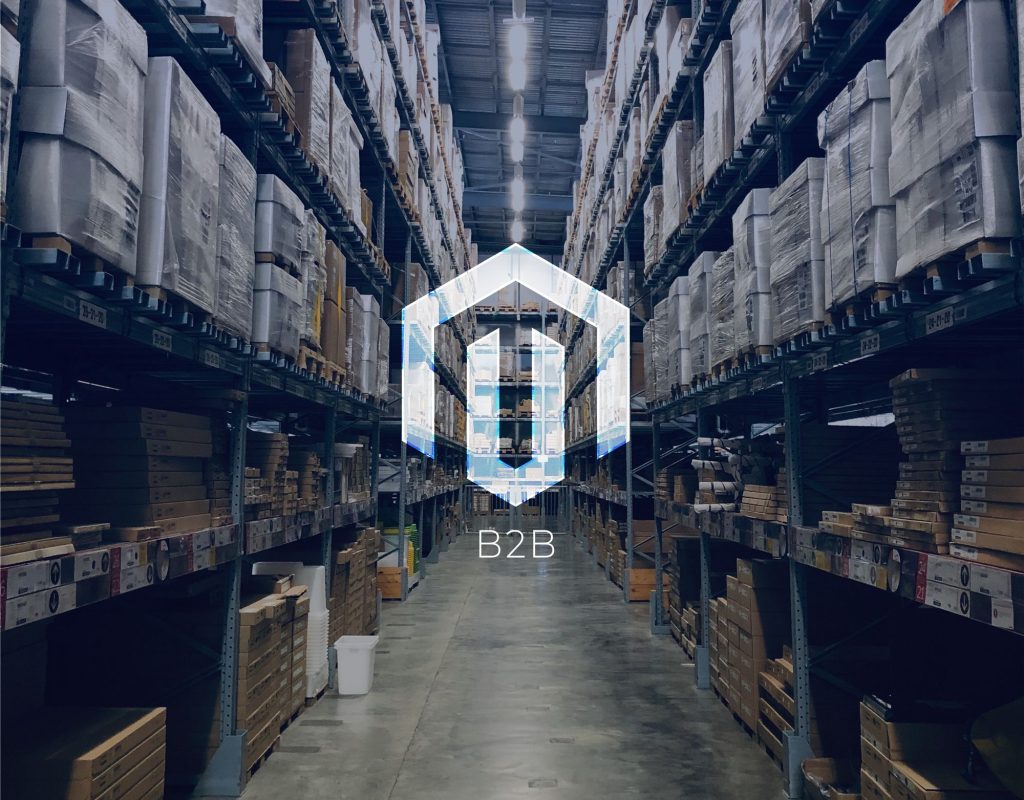Is Magento 2 Good For B2B eCommerce Business?
We at Default Value know a thing or two about Magento and B2B e-commerce. How else could it be—we’ve been developing web and mobile online stores on Magento for over 13 years. We developed our own modules and extensions and carried out so many integrations that it’s hard to count. All this experience was accumulated primarily to meet our client’s expectations and go further—to give the client something he didn’t know he needed. After all, our main goal is to add value to the client’s business through a high level of service.
The B2B eCommerce market has grown significantly in recent years. According to Statista, the value of Europe’s B2B eCommerce market will exceed $1.8 trillion by 2025. With numbers like these, it’s time for your B2B company to use a digital commerce platform that will take your business to the next level.
Running a B2B e-commerce web sites is more complex than a traditional B2C one. B2B customers crave additional features and personalization. Not all eCommerce solutions can handle B2B transactions, so choosing the right eCommerce platform is critical to the success of your business.
Magento is the best solution for managing everything in one place. It includes all the basic B2B features to manage your online store effectively—and we’re not just talking about integration with ERP. In this article, we have compiled a list of Magento 2 B2B features to support the growth of your business.
Is Magento a universal solution for entrepreneurs and developers?
Magento is a boxed website management system written in PHP and uses relational databases. It is used as a platform for the development of online stores. There is a paid version with support from the manufacturer and a free Open Source edition developed by the community.

Features, benefits, and characteristics:
- Ability to set different attributes (properties) for goods, grouping goods into sets, configurable products—products with selective properties (e.g., color and size for clothes, amount of memory for electronics, etc.);
- Product sorting and filtering by attributes predefined by the administrator: product comparison, step-by-step filtering, tagging and filtering by tags,
- From the admin panel, you can manage a trading network of online stores on different domains and languages with a diverse product range. You can flexibly customize the appearance: both at the choice of “themes” and “templates,” as well as by their customization.
- Work with different currencies: it is possible to keep stock and management accounting in one currency and display it on the site—in another (including at the choice of the buyer), it is possible to assign different currencies to different showcases for price tags and management of exchange rates (manual and automatic with updating on schedule), and also work with tax rates at the region, country or postal code level, depending on the type of sale (wholesale and retail sales, for example, can be taxed in different ways) and on the variety of goods (for example “tax on medical equipment”)
- Flexible pricing tools: tiered pricing and pricing rules, coupons, organization of sales, bulk discounts;
- Reports by sales, customer baskets, checked items list, reviews, tags, search;
- Support of various payment and delivery methods, including delivery to several addresses;
- You can work with both individual and groups of buyers;
- Communication with the buyer: email messages, newsletters by email, customer feedback on products, and administration responses;
- Wish List (pending items), shopping cart and checkout, customers’ accounts, recommendation of goods by one customer to another, related product offerings to customers (cross-sales);
- Access control system;
- SEO-friendly: you get full access to HTML markup, can set an individual HTML template for a certain product or product section, Magento automatically generates an XML sitemap for search robots, and many more;
- Data import and export + Magento DataFlow is a library that allows programmers to develop their own import and export modules.
- Modularity—the system was originally designed as a modular architecture. Its core has several modules and is easily expandable by third-party plug-ins (paid and free), which can be found on the vendor’s website.
Many well-known companies use Magento as a website management system: Skype, 20th Century Fox, Nokia, Lenovo, Longines, Samsung, Olympus, and Time Out, and so on.
As you can see, Magento has a lot of advantages for B2B. So, small businesses can use the basic features of this CMS and, as they master it, add more functionality to increase the performance of their B2B eCommerce websites as their audience grows.
Based on this small business scalability, Magento is also great for medium to large e-commerce B2B projects. It’s also great for rapid development because it’s an open-source solution. Developers on Magento have many extensions, APIs, and modules ready to go, not to mention the huge knowledge base of thousands of developers worldwide.
5 Best Magento 2 B2B Features
Now, let’s examine what features Magento 2 offers for businesses in eCommerce.
Magento Multi-Source Inventory
Every B2B customer has different needs, and to meet those needs, Magento introduced Multi-Source Inventory (MSI), designed to handle inventory from different sources or locations.
Magento Multi-Source Inventory allows store owners to manage multiple sources and handle inventory for each warehouse. MSI helps create multiple business structures, storefronts, brands, policies, tax rules, etc. Vendors can set access levels to maintain these business structures so that corporate customers can manage their accounts seamlessly without needing a vendor.

With Magento Multi-Source Inventory, B2B store owners can add and remove company users, sort users into a hierarchy that correlates with their business essence, and define permissions and controls for each user. They can also track inventory from multiple sources and integrate it with third-party inventory systems. It’s one of the trends in B2B e-commerce.
Customized Catalogs
B2B e-commerce sellers can customize catalogs and create price lists to manage products, categories, and prices. With a custom catalog, you can determine which products to include and which to exclude, filter items displayed in search results, and more.
With a custom Magento catalog, you can also copy existing catalogs to customize them and accept new customers quickly. With the Action Log feature, you can monitor the status of background processes.

When the catalog is ready, the next step is setting up individual prices. You can simultaneously set prices for one or more products and apply fixed or dynamic pricing models to provide percentage discounts.
Quick Order
Typically, B2B buyers almost always know exactly what they are looking for when opening your online store. Magento 2 has greatly simplified the checkout process by introducing a “Quick order.” So, your customers can purchase the product they want in just a few clicks. They don’t even have to register. All they need to do is enter the SKU number or the name in the search box, and then, if the product is in stock, the customer will see its image and price.
What’s more, with Magento’s quick ordering, customers can create multiple listings by simply copying previous orders and selecting “add to order list” on category pages, making the reordering process as easy as possible.
Payment
Another important thing is how payments are organized. Payments in the B2B model are individual for each customer. Most B2B transactions involve credit, and online payments are rare. B2B clients often share open accounts with a vendor.

With Payment by Account, Magento allows vendors to activate or deactivate this option for their customers. This way, B2B businesses can provide credit to their customers and set credit limits for each account. Customers can view their credit limit before placing an order. You can also set up payment methods for specific countries or each company, determine the optimal order volume for purchases on credit, check company transactions, make necessary changes to unpaid debt, etc.
Increase minimum order amount ⟶ Increase profit margin
Magento 2 also has a great feature that allows you to increase your profit margin by setting the minimum order amount (while deducting discounts and taxes). This feature is especially useful for several reasons. First, you can increase your average revenue per customer while providing free or discounted shipping. In addition, you can confirm your arrangements with your customer with a product reservation.
Final word
As you can see, Magento 2 is not just a good but an excellent solution for B2B e-commerce web sites. Of course, we have not considered in detail all of its valuable features—there are many more. Combined with the many extensions and APIs available, this platform becomes almost indispensable for online commerce businesses.
It becomes evident that Magento 2 is definitely worth your attention. But remember that the platform itself does not solve anything—you also need to hire a skilled team of Magento developers. And we can help you with this, so feel free to leave an application on our website, and we will advise you on all matters!




